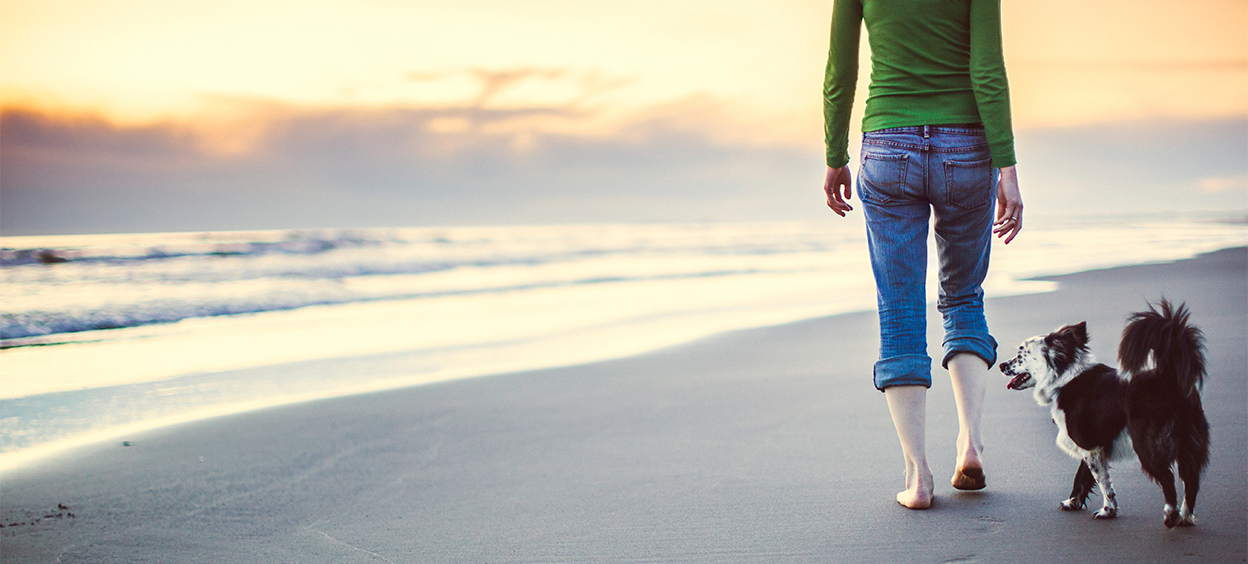Travelling with your pet
There’s nothing like a holiday to recharge your batteries and refresh your spirit. If your pet is traveling with you, a little bit of planning can make the trip the fun and relaxing experience it’s meant to be.

Getting ready to go
Keep in mind that while you’re probably looking forward to a break from the everyday, pets thrive on routine. We asked Dr. Chip Coombs, the Chief Veterinary Officer with RSA’s pet insurance division, Pets Plus Us for his advice. Dr. Chip recommends staying as consistent as possible with food, bedtime, and exercise. This will help avoid behavioural problems and digestive distress. Plan to bring along a favourite toy or bed when you travel. It will help their new environment feel secure and familiar.
If you have any concerns about your pet’s health, make sure you contact your vet before you go. That way you won’t be wondering if a minor ailment will turn into a full-blown emergency when you’re gone. Also, if there is a border crossing involved, keep in mind that you might be turned away at your destination if your dog or cat is sick. This is the time to get any proof of vaccination documents you might need if you’re travelling internationally. If your pet has a condition that requires regular medication, be sure you stock up before the holiday to avoid running out.
As added peace of mind, make sure that your cat or dog has up-to-date tags or a microchip. Take a current photo—this will help speed the process if you have to enlist others to help you find a lost pet.
Air travel
Unless your pet is a service animal, your dog or cat will make the trip in a kennel, either in the cabin tucked under the seat or secured in the cargo hold. There are very specific rules about what kind of kennel is acceptable, so do your homework first. Luckily, most airlines have detailed information available online. If you’re still not sure, bring the kennel to the airport and have them give you the green light. That way, there won’t be any surprises on the day you plan to fly.
A lot of people are nervous about traveling, especially by plane. Your pet may feel the same. If your cat or dog has a track record of being a poor traveller, you may be considering giving him or her a sedative. Check with your vet first to be sure this is the right choice—depending on your pet’s health, the risks may outweigh the benefits.
Car travel
Most dogs love nothing more than a chance to hang their head out the car window, but this isn’t a good idea. It’s hard to deny them that little bit of happiness, but even at low speeds you dog can be seriously injured if something airborne hits their eye. Plus, ear trauma can occur from the constant flapping of the ear against the skull, not to mention pain in the ear canal from the wind, especially if it’s cold out. Worst of all, a sudden stop might lead to a pet falling out of the window.
While some pets love a good car ride (or just sleep through it!), others think it’s something to be avoided at all costs. An anxious pet may feel the need to hide and even try to crawl under the seat. Others may bounce around the interior, panicking and looking for a way out. Do yourself and your pet a favour by providing a secure place for your pet to travel. That might mean using a travel carrier or setting up a secluded space just for them.
We all know that seatbelts can save lives. Now, you can protect your pet with one, too. Harnesses are available in a wide range of sizes that clip into your vehicle’s seatbelt connector. Your dog or cat is protected in case of an accident and, as an added bonus, your pet can’t leap out the car door until you attach their leash and disconnect the seatbelt.
When you’re picking up your snacks for the road, don’t forget about your pet. Bring along some water and a small bowl or disposable cup for drinking. If it’s going to be a long trip, have some of your pet’s food handy and stick to your regular mealtimes and break times.
Don’t leave cat or dog unattended in the car. It doesn’t take much for heat or cold to overwhelm a pet. Plus your pet won’t take long to find the goodies hidden around your luggage and the forgotten snack wrappers and leftovers left behind.
Hotels
Many hotels now welcome travellers with pets, but find out in advance what “pet friendly” means. Some will go the extra mile and provide green space, food and water dishes and other amenities for your dog or cat. Others will put a surcharge on your bill for the privilege of having your pet in the room, but offer nothing more than the roof over your heads.
Snowbirds and other extended travel
Many Canadians enjoy a break from the cold and snow and take extended trips to the US in the wintertime. If that’s you, know US regulations before you go. Most dogs travelling to the US will require proof of up-to-date rabies vaccinations. Also be aware of no-fly times if you’re travelling by plane. During the hottest and coldest months of the year, pets that would normally travel in the cargo hold won’t be able to fly at all. How will you handle an emergency if you have to get home in a hurry? Be sure to have a back-up plan. You should also know where the nearest vet office to your location is located.
Like with people travel, preparation is important. Check and double-check and then you’ll be ready to enjoy your time away from home!
